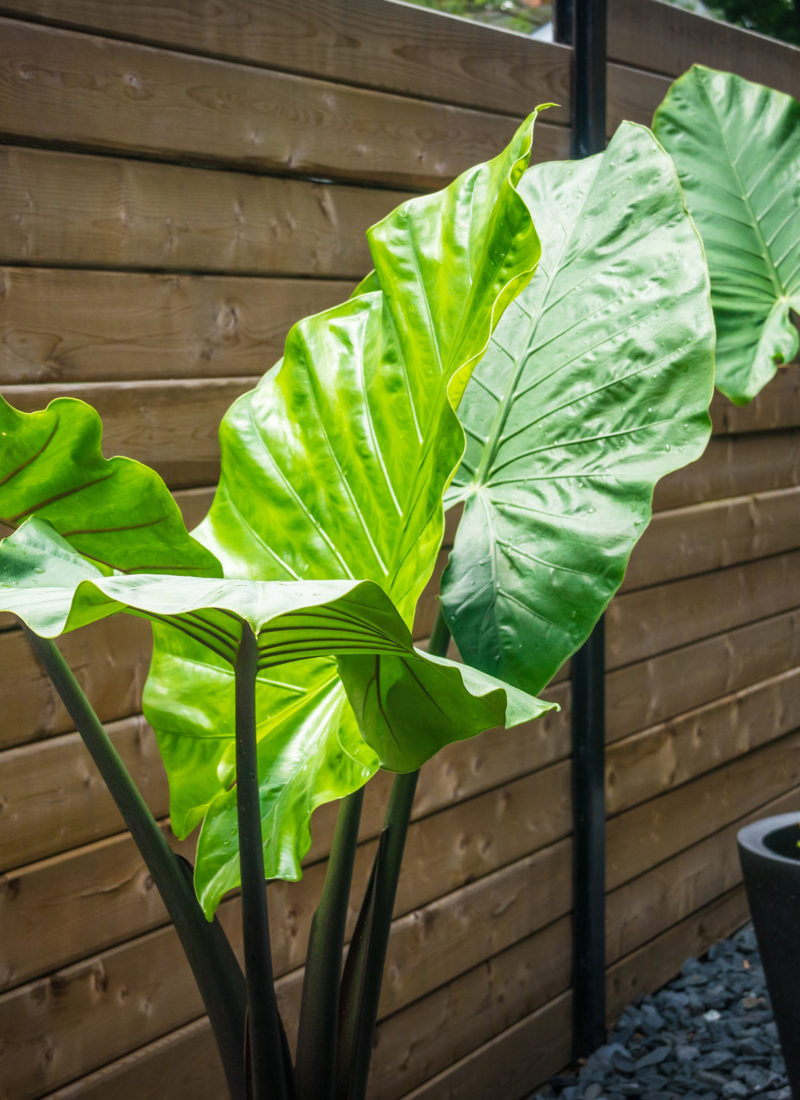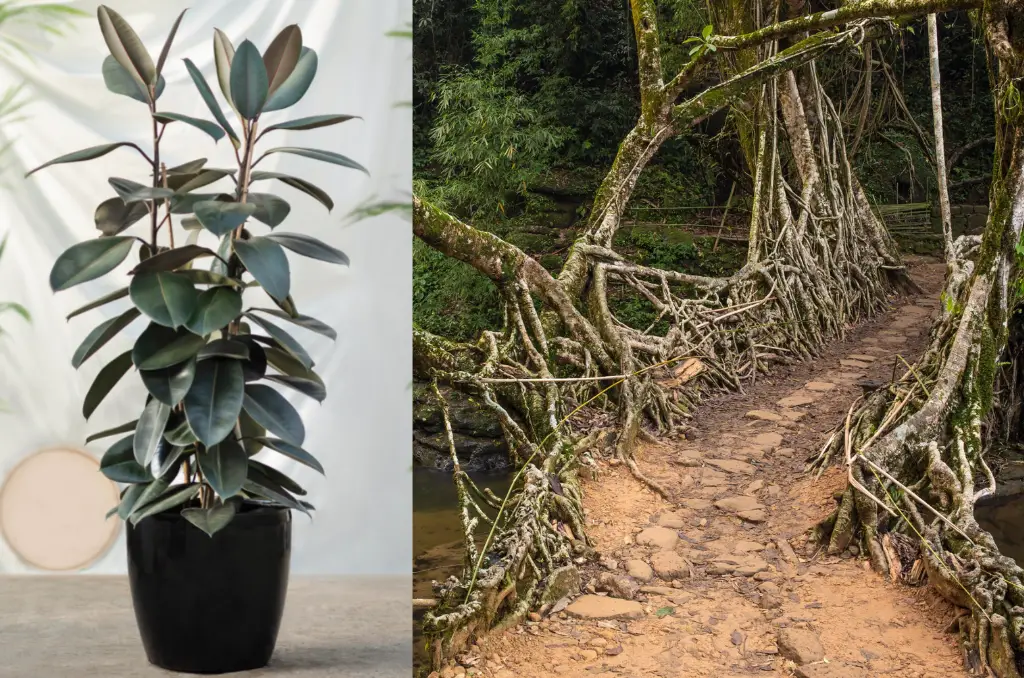
The Rubber Tree that you and I keep as a houseplant is in fact, a monstrously large member of the Fig family in a juvenile state. Most people have only seen small Rubber trees and would assume they only get 10-15 or maybe 30 feet tall at most. In captivity that’s about right. But that’s because that little monster is in a pot. In the wild, like a vine the rubber plant will often use a tree or structure to grow against when it’s young, making the rubber tree taller quicker. Eventually, after many years of growth, Ficus elastica can grow to as much as 195ft tall!! The aerial roots are so big on a mature tree that people have even created living bridges by weaving them together and I’ve got pictures to prove it! But first a little info on aerial roots:
Generally, Rubber plants/Ficus elastica grow aerial roots for climbing, gaining nutrients, and keeping the tree stable and upright in the wild. Like many plants of the ficus family, it is epiphytic or a “strangler” in its juvenile form. This means it may grow on other plants for physical support.
Below I will cover more information about the roots, the rubber plant itself, and how to work with the aerial roots:
(As an Amazon Associate, I earn from qualifying purchases.)
Table of contents
Do Ficus Elastica Grow Aerial Roots?
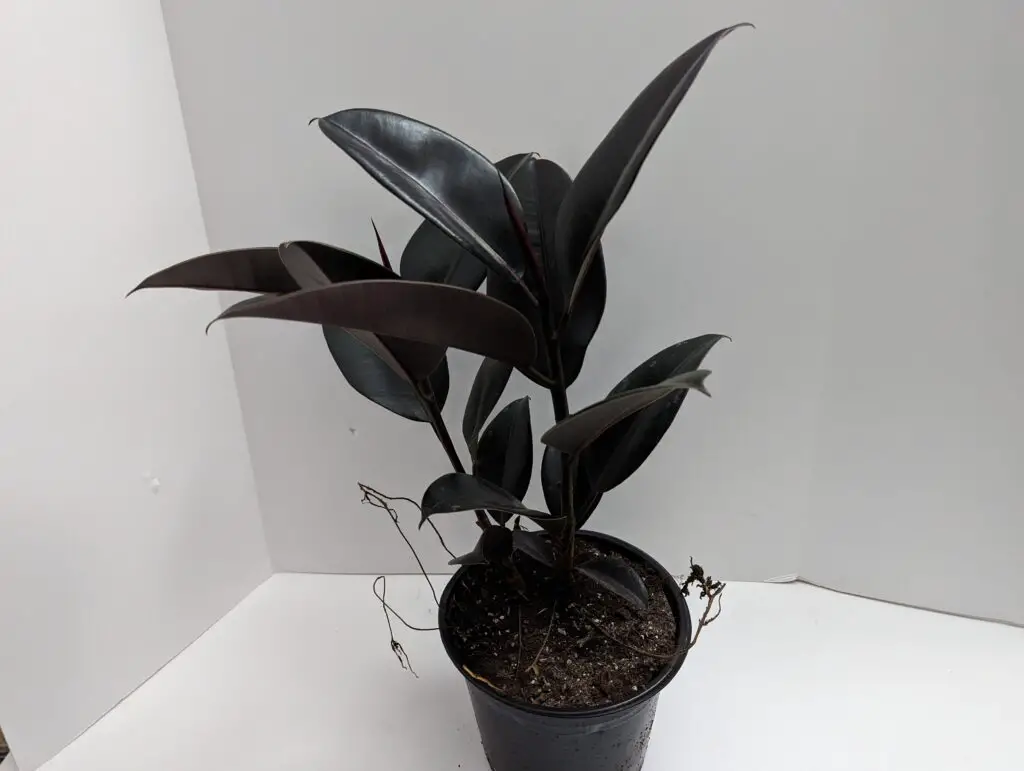
As mentioned before, rubber trees are epiphytic plants as seedlings/saplings, which means they often grow on other plants or trees in nature. This tendency also manifests itself in captivity with plants as small as 1ft, as shown in the picture above. Rubber tree or Ficus Elastica aerial roots appear if the plant is healthy and looking to expand its nutrient resources. This is how a Ficus Elastica slowly turns from a stick with some leaves on it into one monster of a tree.
In a home setting, placing the aerial roots against a moss pole or just a redwood stick helps support the tree’s growth. Using a rooting compound may encourage these roots to wrap into the moss pole or around whatever you use to prop the plant up. This younger growth stage may feel like “Weekend at Bernie’s” for a while.
In the adult stages of the plant, however, these aerial roots get so big that entire bridges are woven from them. While you will likely never see your rubber plant get to this size, take a look at this:
Here is an original Belgian illustration from a periodical dating from 1856, when Ficus Elastica was first being discovered near Nepal:
This is a truly gigantic tree; those little dots at the bottom right of the full tree’s illustration are people!
It must have been astounding to come across these giants, and even more impressive are the bridges woven from their roots depicted in another illustration from that same periodical from 1856:
If you think this is old-world nonsense or a fairy tale, I would like to show you modern-day pictures of living Ficus Elastica bridges made from aerial roots in the nearby state of Meghalaya, India that are standing to this day:
Frequently Asked Questions About Rubber Plant/Ficus Elastica
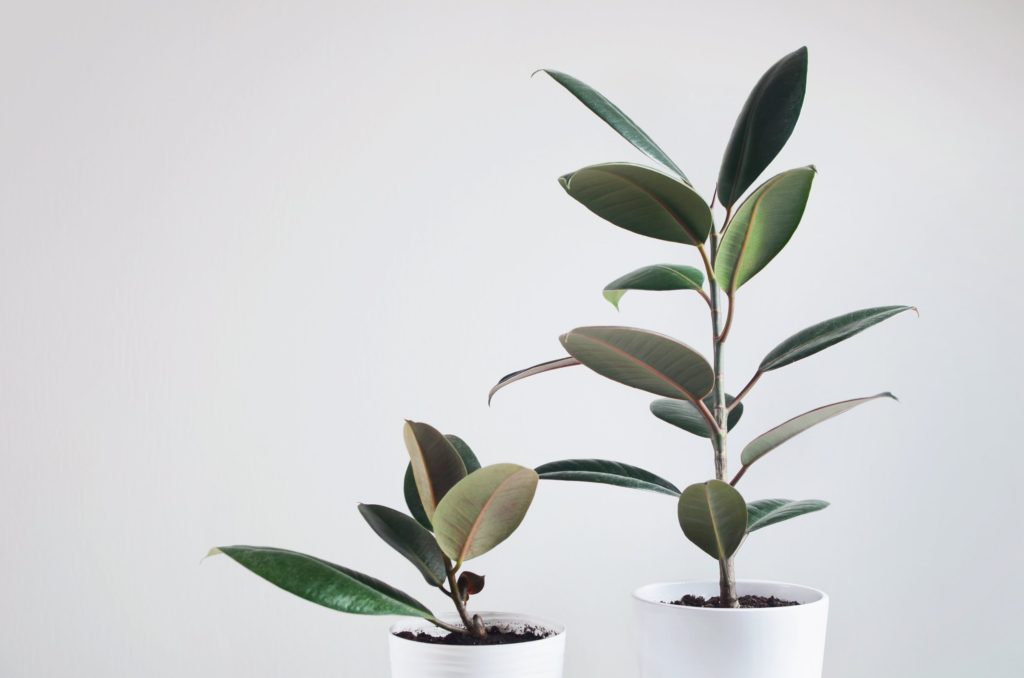
Rubber plant/Ficus Elastica is an aggressive plant with invasive roots. Be wary of planting it in the ground as it may grow so fast that it will be difficult to keep up with. It will also quickly outgrow its pot if you don’t keep an eye on it. It’s best to get a pot 3-4 inches larger than the current one for repotting.
Ficus elastica has fibrous roots that are dense and grow quickly. The plant relies on a tap root that can go into the ground as far as the tree goes up, with aerial roots that help it climb and gain height and stability. If you’re growing your rubber tree in a pot, choose one with drainage holes to prevent the plant from becoming waterlogged.
While rubber tree roots in houseplants are not normally considered large, the aerial roots in the wild however, can become quite thick and strong over time once they have established a connection with the soil. These trees typically grow in tropical climates and may use other trees to support themselves as they grow taller and this is where in the juvenile stages their aerial roots may come in handy.
If you are concerned about the size of your rubber tree’s roots, especially if it’s growing outside. It is best to consult a professional before planting it in the ground, as it has a deep tap root and the aerial roots can also add to the problem as the tree matures and grows taller.
Rubber plants have a tap root that digs deep into the ground and is thought to go down about as deep as the tree goes up. Between the tap root and the aerial roots, both work together to better establish the main trunk with nutrients and stability.
Rubber trees have deep roots that anchor them into the ground and help support their eventual larger size. However, you may see some aerial roots on the plant. These are not considered shallow roots even if they haven’t dug too far into the soil to grow quite yet. Generally speaking, those roots will eventually anchor into the soil so, if you’re growing your rubber tree in a pot, don’t be surprised if you see roots popping out of the bottom after a year or so because even just the tap root will take full advantage of the space you give it.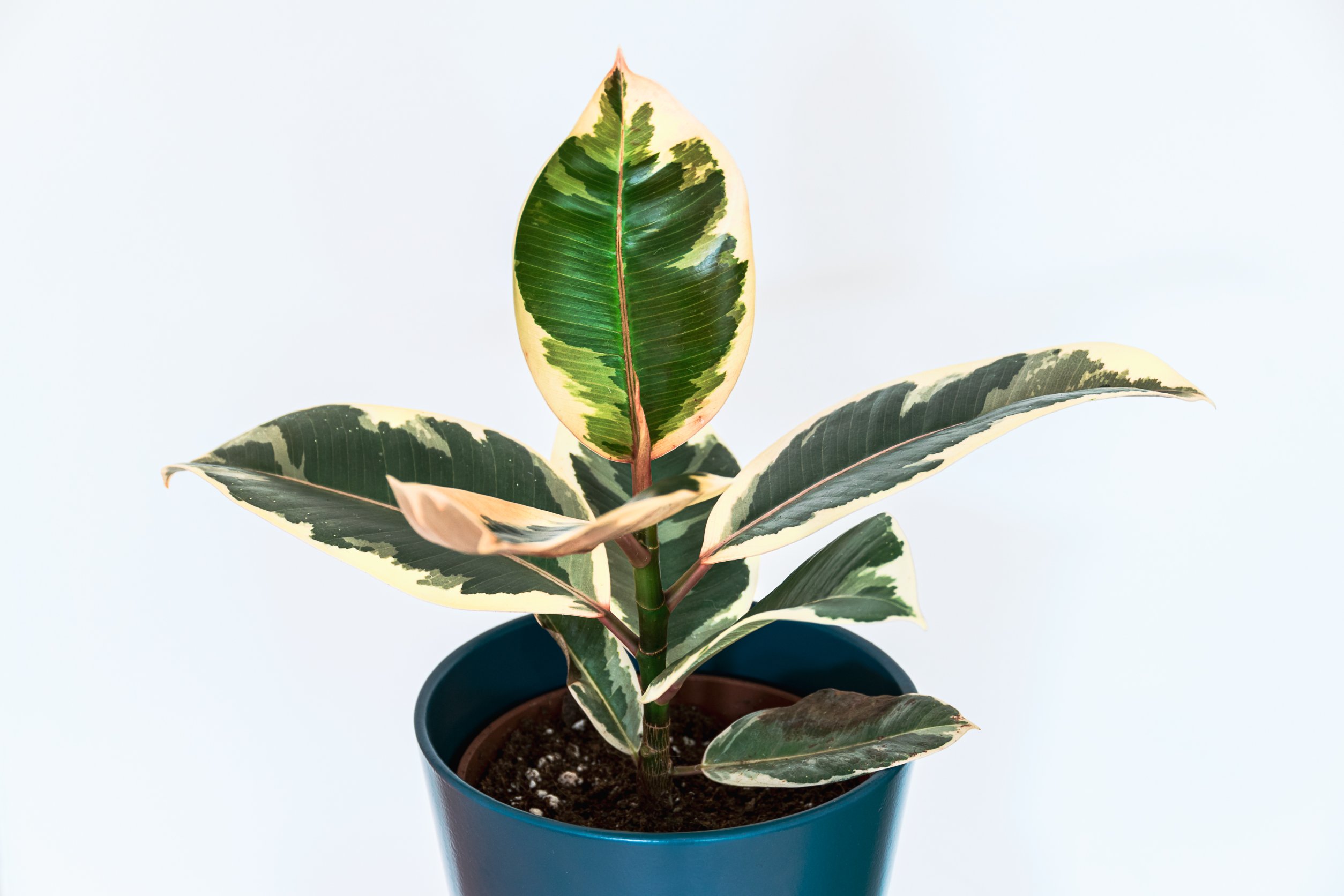
While rubber trees don’t necessarily like to be root bound, they will tolerate it better than most plants. This is because their roots are designed to develop quickly and fill up any space they’re in. It’s advisable to use a deeper pot to accommodate the plant’s root system and repot when its roots start poking out the drain holes at the latest.
Rubber trees can be repotted at any time of year, but it’s best to do so in the spring when the plant is actively growing. Be sure to choose a pot that’s only slightly larger (3-4 inches bigger) than the one the plant is currently in and use a fresh potting mix. Water well after repotting and keep an eye on your plant for the next few weeks, reducing watering if necessary.
As a whole, not all ficus have aerial roots. But many do, including Ficus elastica (the rubber tree). Other examples of ficus with aerial roots include Ficus Benjamina (weeping fig), Ficus Pumila (climbing fig), and Ficus Aurea (strangler fig).
Rubber plants are not cold-hardy and should only be grown outdoors in USDA zones 10b-12. They also tend to take off, not run away, of course, haha, but they can become huge fairly quickly, so make sure you have enough room away from structures and other plants before you place them in the ground.
If you live in an area with colder winters, it’s best to grow your rubber tree in a pot so you can bring it indoors when temperatures drop. Rubber plants grown outdoors will need more water than those grown indoors, so be sure to keep an eye on the soil moisture level and adjust watering as needed.
Rubber trees do like a fair amount of water. If the tree is in the ground, depending on how established the tree is and how often it rains, you may not need to water.
The usual watering schedule for a young tree may be once per week if there is no other water source (groundwater or rainwater) for the plant. So keep an eye on the plant. If it looks a bit droopy, give it a thorough watering and leave it for a week or so before watering it again.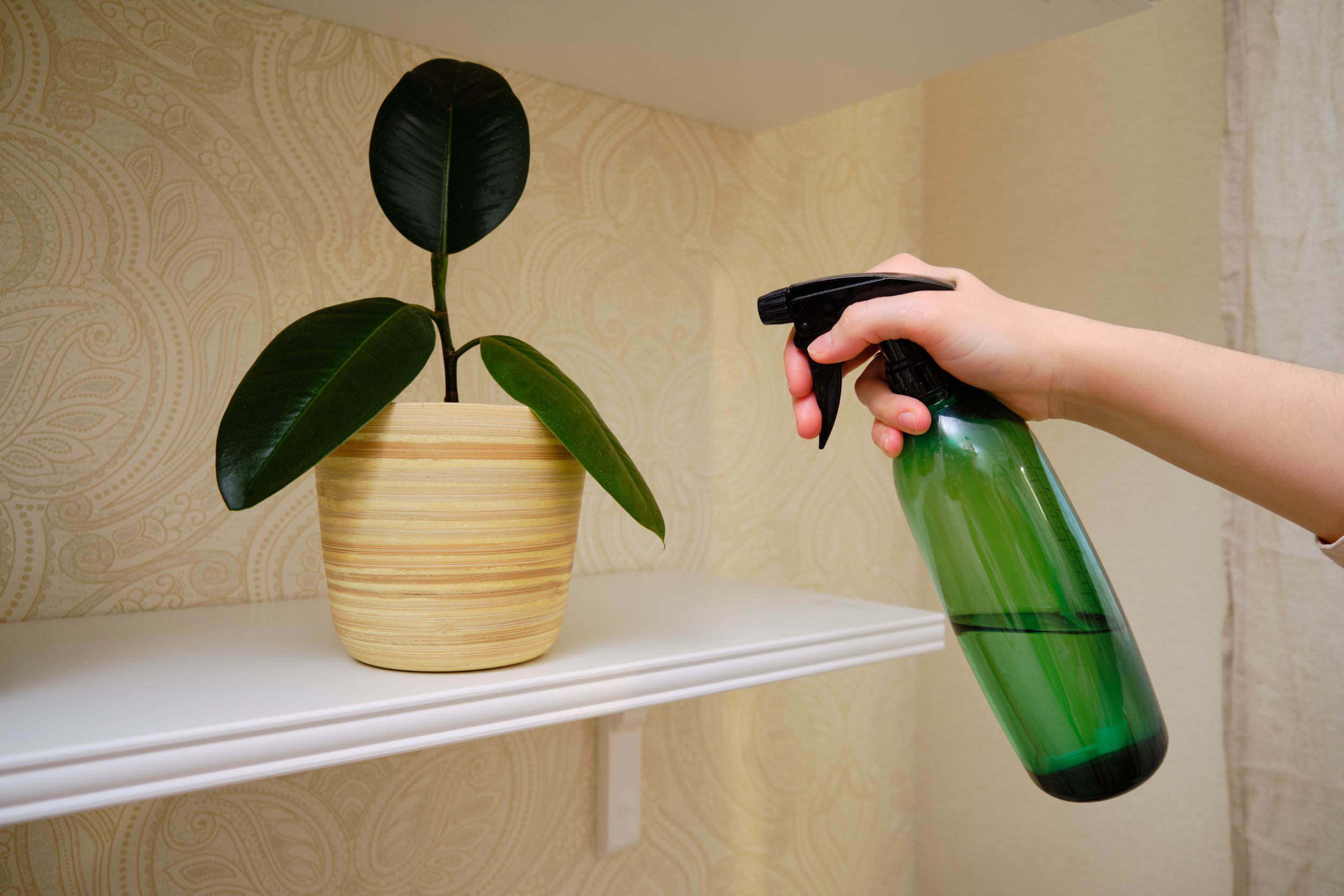
Rubber plants require plenty of bright, indirect sunlight to develop well. But it can also tolerate low light levels, especially as seedlings and young saplings. If your plant is not getting enough light, you may notice the leaves turning yellow or brown and dropping off. If this happens, move your plant to a brighter location and reduce watering until it adjusts to its new environment.
It’s important to note that rubber plants do not appreciate direct sunlight when they are very small (under 3 ft). It may get scorched leaves from overexposure as a young plant. But once it’s established with a height of 3 feet or more, it can usually handle direct sun with a gradual introduction. Here is a general step-by-step instruction on how to do that:
1. Move it from indoors by a window to outside under a bit of shade.
2. After a week or so, leave it out under dappled shade.
3. Finally, leave it thriving under direct sunlight but, keep an eye on it if it is closer to the 3ft tall mark.
Make sure you also keep track of your watering schedule because the increased sunlight means increased evaporation. You will likely need to water often the more sunlight the plant gets.
Once a week is a typical watering schedule for a rubber tree. Watering your rubber plant consistently is vital to ensure the soil is always moist to the touch. The best way to water a rubber tree is to use the “drip” method. Water the plant until it drips out of the drainage holes, then stop. Afterward, empty any saucers or catch trays of excess water. Remember: never let your rubber tree sit in water for more than an hour or so, as this can lead to root rot.
Fertilize rubber trees every two weeks during the growing season (spring and summer) using a half-strength fertilizer solution. During the fall and winter, fertilize your plant once a month or not at all. If you notice the leaves turning yellow/brown and dropping off, this could signify over-fertilization. Cut back on the fertilizer and let the plant recover.
Rubber trees are fast growers and can quickly take up space in a garden and disrupt structures. If you’re growing your rubber tree outdoors, keep an eye on its growth and prune as necessary to control its size and keep it from strangling its neighbor plants with its aerial roots. Although generally, the rubber tree isn’t known for strangling, the ficus family is certainly capable of it.
If you’re growing your rubber tree in a pot, choose one large enough to accommodate the plant’s root system. Don’t be afraid to select a deeper pot meant for a tree to give the roots a little extra room to grow and this deeper tap root may make the tree more stable and allow it to grow taller.
How to make a rubber tree branch out:
As a general rule, pruning a rubber tree back encourages it to branch out. Rubber trees are fast growers, so they will quickly bounce back from a pruning session. If you’re unsure where to prune, simply snip off the tips of the branches. This will encourage the plant to branch out and become fuller.
Keep in mind that cutting the rubber tree’s main stem means it will no longer grow taller on that stem, but the branches that develop from it can. Make sure you have an idea how tall you want the main trunk to be before you start cutting because, just like hair, you can’t really put it back once you cut it off. Be a good barber and only cut with a purpose.
References:
http://www.efloras.org/florataxon.aspx?flora_id=1&taxon_id=200006353
https://powo.science.kew.org/taxon/urn:lsid:ipni.org:names:854456-1
https://powo.science.kew.org/taxon/urn:lsid:ipni.org:names:60458499-2
https://balconygardenweb.com/7-amazing-rubber-plant-benefits/
https://www.reddit.com/r/houseplants/comments/qalopu/is_my_ficus_elastica_growing_aerial_roots/
http://www.botanicus.org/Copyright.aspx
http://www.botanicus.org/bibliography/b11764600
https://gardenerspath.com/plants/houseplants/grow-rubber-tree/
https://en.wikipedia.org/wiki/Ficus_elastica#/media/File:10_Shnongpdei_1.JPG
https://humanplanet.com/timothyallen/2011/03/living-root-bridges-bbc-human-planet/
https://en.wikipedia.org/wiki/Hevea_brasiliensis
Firefly Encyclopedia of Trees – Edited by Steven Cafferty – p.165 – Published 2005
Encyclopedia of Tropical Plants – Ahmed Fayaz – p.444 – Published 2011



